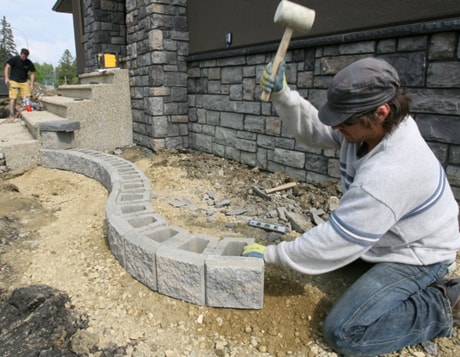Housing starts were down in most of Alberta’s major cities last month, including Red Deer.
Canada Mortgage and Housing Corp. reported on Wednesday that there were 50 residential construction starts in the city in May, with 33 of these in the single-detached category and 17 consisting of units in multi-family projects. That’s down 12.3 per cent from the 57 starts recorded a year ago, when work began on 53 single-detached houses and four multi-family units.
Total housing starts in Alberta’s seven largest urban areas fell 8.4 per cent from May 2010 to May 2011, with only the Edmonton metropolitan area showing a sight increase, at two per cent. Residential construction in Lethbridge slipped by 10.4 per cent, in Grande Prairie the decline was 13.9 per cent, for the Calgary metropolitan area it was 18 per cent, Medicine Hat fell 23.1 per cent and the Regional Municipality of Wood Buffalo dropped 27.7 per cent.
For the period running from January to May, housing starts in Alberta’s seven biggest centres tumbled 42.1 per cent, as compared with the same period in 2010.
The greatest decline occurred in Medicine Hat, at 50 per cent, followed by Red Deer (42.1 per cent), the Calgary metropolitan area (28.5 per cent), the Edmonton metropolitan area (24.8 per cent) and the Regional Municipality of Wood Buffalo (10 per cent), Grande Prairie was up 0.6 per cent, and Lethbridge jumped by 29.4 per cent.
Nationally, the seasonally adjusted annual rate of housing starts in May rose to 183,600 from 178,700 in April, said CMHC.
“Housing starts increased modestly in May due to an increase in multiple construction in most provinces and in rural starts,” said Bob Dugan, chief economist at CMHC’s Market Analysis Centre.
“The increase in multiples and rural starts was partly offset by a decrease in single starts.”
Multiple unit buildings have outpaced single unit starts by an average of about 30,000 units over the past year, said BMO economist Robert Kavcic.
“The preference appears to be toward smaller, more affordable units, especially in the expensive B.C. and Ontario markets,” he wrote in a note.
The increase in new urban condos came even as some economists have been warning about an overbuilt condominium sector — especially in big cities like Toronto and Vancouver — that could cause a glut of supply on the market, exacerbating the impact of any downturn.
The housing market has already showed signs of slowing, but home prices remain sky-high, reaching a national average of $372,544 in April. Prices are outpacing income and job growth and that, combined with elevated levels of household debt, is putting a squeeze on homeowners.
Economists believe that some Canadians are able to carry the load as both long-term and variable rate interest rates remain low. They warn that there could be a big drop in housing prices when interest rates rise and owners find it more difficult to own such pricey homes, which could lead to a sell off and a drop in home prices.
Some have even predicted prices could fall as much as 25 per cent in the next year.
The Bank of Canada is expected to increase its overnight lending rate — the rate that banks use to set their prime lending rate for consumers — meaning homes will become harder to afford, sparking a pullback in buying activity, said TD Bank economist Francis Fong.
“With the Bank of Canada set to raise interest rates later this year affordability will weaken further, putting downward pressure on overall prices and, thus, construction activity,” Fong wrote.
“TD Economics anticipates housing starts to run below their long-run sustainable level over the next few years as multi-unit building slowly unwinds.”
CIBC World Markets economist Krishen Rangasamy said housing starts reached a peak in the first quarter of last year and the numbers have been on a gradual decline ever since, even with low interest rates.
“And with a recent softening in the pace of existing home sales, the listing to sales ratio rose to a seven-month high in April. So, we may see some softness ahead for housing,” Rangasamy said.
“We expect housing starts to continue to soften — a 10 per cent or so drop in starts compared to last year — as home prices stagnate in light of higher interest rates in the second half of the year.”
But Kavcic noted that housing starts so far this year are about in-line with the annual rate of household formation.
“After a strong post-recession sprint, residential construction activity in Canada seems to have settled down at a sustainable level consistent with underlying demand,” he said.
“Housing shouldn’t be much of a driver nor much of a drag on growth in 2011.”
In the most recent CMHC report, urban starts increased 0.8 per cent in May. Urban multiple starts were up four per cent, while single urban starts fell 4.1 per cent.
May’s annual rate of urban starts increased 33.3 per cent in British Columbia, 13.5 per cent in Quebec, 11 per cent in the Atlantic region and 10 per cent in the Prairies. Urban starts fell 22.9 per cent in Ontario.
Earlier this week, Statistics Canada reported that the value of building permits fell to $5.3 billion in April, a 21 per cent decline from March when municipalities issued $6.8 billion in building permits, the highest figure since June 2007.
Building permits are a signal of contractors’ intentions and foretell trends in the housing and construction markets.
With files from The Canadian Press.
